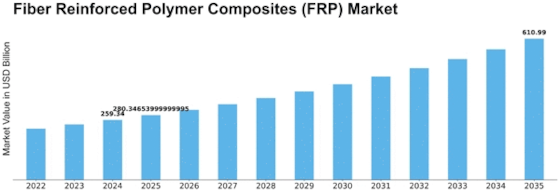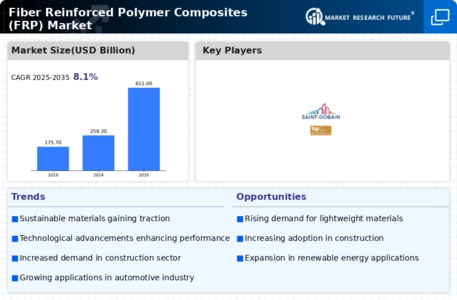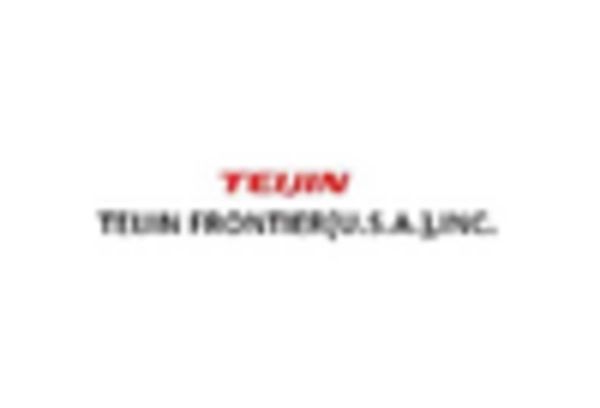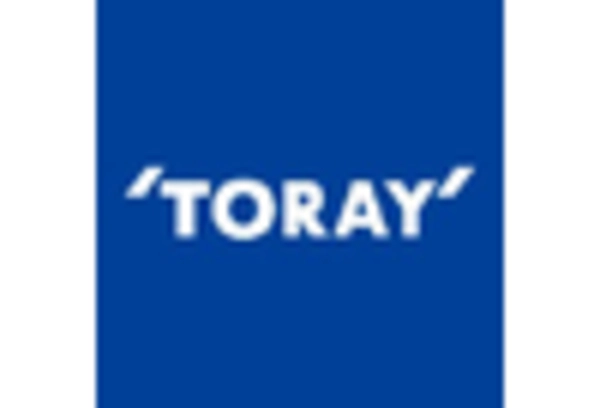Glass Fiber Reinforced Polymer (GFRP) Composites
Carbon Fiber Reinforced Polymer (CFRP) Composites
Basalt Fiber Reinforced Polymer (BFRP) Composites
Aramid Fiber Reinforced Polymer (AFRP) Composites
Automotive
Construction
Fire Fighting
Defence
Others
Fiber Reinforced Polymer Composites (FRP) Market by Product TypeGlass Fiber Reinforced Polymer (GFRP) Composites
Carbon Fiber Reinforced Polymer (CFRP) Composites
Basalt Fiber Reinforced Polymer (BFRP) Composites
Aramid Fiber Reinforced Polymer (AFRP) Composites
Fiber Reinforced Polymer Composites (FRP) Market by ApplicationAutomotive
Construction
Fire Fighting
Defence
Others
Fiber Reinforced Polymer Composites (FRP) Market by Product TypeGlass Fiber Reinforced Polymer (GFRP) Composites
Carbon Fiber Reinforced Polymer (CFRP) Composites
Basalt Fiber Reinforced Polymer (BFRP) Composites
Aramid Fiber Reinforced Polymer (AFRP) Composites
Fiber Reinforced Polymer Composites (FRP) Market by ApplicationAutomotive
Construction
Fire Fighting
Defence
Others
Fiber Reinforced Polymer Composites (FRP) Market by Product TypeGlass Fiber Reinforced Polymer (GFRP) Composites
Carbon Fiber Reinforced Polymer (CFRP) Composites
Basalt Fiber Reinforced Polymer (BFRP) Composites
Aramid Fiber Reinforced Polymer (AFRP) Composites
Fiber Reinforced Polymer Composites (FRP) Market by ApplicationAutomotive
Construction
Fire Fighting
Defence
Others
Fiber Reinforced Polymer Composites (FRP) Market by Product TypeGlass Fiber Reinforced Polymer (GFRP) Composites
Carbon Fiber Reinforced Polymer (CFRP) Composites
Basalt Fiber Reinforced Polymer (BFRP) Composites
Aramid Fiber Reinforced Polymer (AFRP) Composites
Fiber Reinforced Polymer Composites (FRP) Market by ApplicationAutomotive
Construction
Fire Fighting
Defence
Others
Germany Outlook (USD Billion, 2018-2032)
Fiber Reinforced Polymer Composites (FRP) Market by Product TypeGlass Fiber Reinforced Polymer (GFRP) Composites
Carbon Fiber Reinforced Polymer (CFRP) Composites
Basalt Fiber Reinforced Polymer (BFRP) Composites
Aramid Fiber Reinforced Polymer (AFRP) Composites
Fiber Reinforced Polymer Composites (FRP) Market by ApplicationAutomotive
Construction
Fire Fighting
Defence
Others
Fiber Reinforced Polymer Composites (FRP) Market by Product TypeGlass Fiber Reinforced Polymer (GFRP) Composites
Carbon Fiber Reinforced Polymer (CFRP) Composites
Basalt Fiber Reinforced Polymer (BFRP) Composites
Aramid Fiber Reinforced Polymer (AFRP) Composites
Fiber Reinforced Polymer Composites (FRP) Market by ApplicationAutomotive
Construction
Fire Fighting
Defence
Others
Fiber Reinforced Polymer Composites (FRP) Market by Product TypeGlass Fiber Reinforced Polymer (GFRP) Composites
Carbon Fiber Reinforced Polymer (CFRP) Composites
Basalt Fiber Reinforced Polymer (BFRP) Composites
Aramid Fiber Reinforced Polymer (AFRP) Composites
Fiber Reinforced Polymer Composites (FRP) Market by ApplicationAutomotive
Construction
Fire Fighting
Defence
Others
Fiber Reinforced Polymer Composites (FRP) Market by Product TypeGlass Fiber Reinforced Polymer (GFRP) Composites
Carbon Fiber Reinforced Polymer (CFRP) Composites
Basalt Fiber Reinforced Polymer (BFRP) Composites
Aramid Fiber Reinforced Polymer (AFRP) Composites
Fiber Reinforced Polymer Composites (FRP) Market by ApplicationAutomotive
Construction
Fire Fighting
Defence
Others
Fiber Reinforced Polymer Composites (FRP) Market by Product TypeGlass Fiber Reinforced Polymer (GFRP) Composites
Carbon Fiber Reinforced Polymer (CFRP) Composites
Basalt Fiber Reinforced Polymer (BFRP) Composites
Aramid Fiber Reinforced Polymer (AFRP) Composites
Fiber Reinforced Polymer Composites (FRP) Market by ApplicationAutomotive
Construction
Fire Fighting
Defence
Others
Fiber Reinforced Polymer Composites (FRP) Market by Product TypeGlass Fiber Reinforced Polymer (GFRP) Composites
Carbon Fiber Reinforced Polymer (CFRP) Composites
Basalt Fiber Reinforced Polymer (BFRP) Composites
Aramid Fiber Reinforced Polymer (AFRP) Composites
Fiber Reinforced Polymer Composites (FRP) Market by ApplicationAutomotive
Construction
Fire Fighting
Defence
Others
Fiber Reinforced Polymer Composites (FRP) Market by Product TypeGlass Fiber Reinforced Polymer (GFRP) Composites
Carbon Fiber Reinforced Polymer (CFRP) Composites
Basalt Fiber Reinforced Polymer (BFRP) Composites
Aramid Fiber Reinforced Polymer (AFRP) Composites
Fiber Reinforced Polymer Composites (FRP) Market by ApplicationAutomotive
Construction
Fire Fighting
Defence
Others
Fiber Reinforced Polymer Composites (FRP) Market by Product TypeGlass Fiber Reinforced Polymer (GFRP) Composites
Carbon Fiber Reinforced Polymer (CFRP) Composites
Basalt Fiber Reinforced Polymer (BFRP) Composites
Aramid Fiber Reinforced Polymer (AFRP) Composites
Fiber Reinforced Polymer Composites (FRP) Market by ApplicationAutomotive
Construction
Fire Fighting
Defence
Others
Fiber Reinforced Polymer Composites (FRP) Market by Product TypeGlass Fiber Reinforced Polymer (GFRP) Composites
Carbon Fiber Reinforced Polymer (CFRP) Composites
Basalt Fiber Reinforced Polymer (BFRP) Composites
Aramid Fiber Reinforced Polymer (AFRP) Composites
Fiber Reinforced Polymer Composites (FRP) Market by ApplicationAutomotive
Construction
Fire Fighting
Defence
Others
Fiber Reinforced Polymer Composites (FRP) Market by Product TypeGlass Fiber Reinforced Polymer (GFRP) Composites
Carbon Fiber Reinforced Polymer (CFRP) Composites
Basalt Fiber Reinforced Polymer (BFRP) Composites
Aramid Fiber Reinforced Polymer (AFRP) Composites
Fiber Reinforced Polymer Composites (FRP) Market by ApplicationAutomotive
Construction
Fire Fighting
Defence
Others
Fiber Reinforced Polymer Composites (FRP) Market by Product TypeGlass Fiber Reinforced Polymer (GFRP) Composites
Carbon Fiber Reinforced Polymer (CFRP) Composites
Basalt Fiber Reinforced Polymer (BFRP) Composites
Aramid Fiber Reinforced Polymer (AFRP) Composites
Fiber Reinforced Polymer Composites (FRP) Market by ApplicationAutomotive
Construction
Fire Fighting
Defence
Others
Fiber Reinforced Polymer Composites (FRP) Market by Product TypeGlass Fiber Reinforced Polymer (GFRP) Composites
Carbon Fiber Reinforced Polymer (CFRP) Composites
Basalt Fiber Reinforced Polymer (BFRP) Composites
Aramid Fiber Reinforced Polymer (AFRP) Composites
Fiber Reinforced Polymer Composites (FRP) Market by ApplicationAutomotive
Construction
Fire Fighting
Defence
Others
Fiber Reinforced Polymer Composites (FRP) Market by Product TypeGlass Fiber Reinforced Polymer (GFRP) Composites
Carbon Fiber Reinforced Polymer (CFRP) Composites
Basalt Fiber Reinforced Polymer (BFRP) Composites
Aramid Fiber Reinforced Polymer (AFRP) Composites
Fiber Reinforced Polymer Composites (FRP) Market by ApplicationAutomotive
Construction
Fire Fighting
Defence
Others
Fiber Reinforced Polymer Composites (FRP) Market by Product TypeGlass Fiber Reinforced Polymer (GFRP) Composites
Carbon Fiber Reinforced Polymer (CFRP) Composites
Basalt Fiber Reinforced Polymer (BFRP) Composites
Aramid Fiber Reinforced Polymer (AFRP) Composites
Fiber Reinforced Polymer Composites (FRP) Market by ApplicationAutomotive
Construction
Fire Fighting
Defence
Others
Fiber Reinforced Polymer Composites (FRP) Market by Product TypeGlass Fiber Reinforced Polymer (GFRP) Composites
Carbon Fiber Reinforced Polymer (CFRP) Composites
Basalt Fiber Reinforced Polymer (BFRP) Composites
Aramid Fiber Reinforced Polymer (AFRP) Composites
Fiber Reinforced Polymer Composites (FRP) Market by ApplicationAutomotive
Construction
Fire Fighting
Defence
Others
Fiber Reinforced Polymer Composites (FRP) Market by Product TypeGlass Fiber Reinforced Polymer (GFRP) Composites
Carbon Fiber Reinforced Polymer (CFRP) Composites
Basalt Fiber Reinforced Polymer (BFRP) Composites
Aramid Fiber Reinforced Polymer (AFRP) Composites
Fiber Reinforced Polymer Composites (FRP) Market by ApplicationAutomotive
Construction
Fire Fighting
Defence
Others


















Leave a Comment